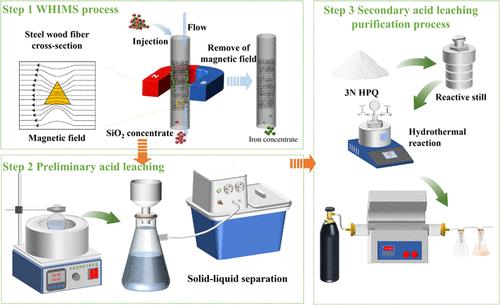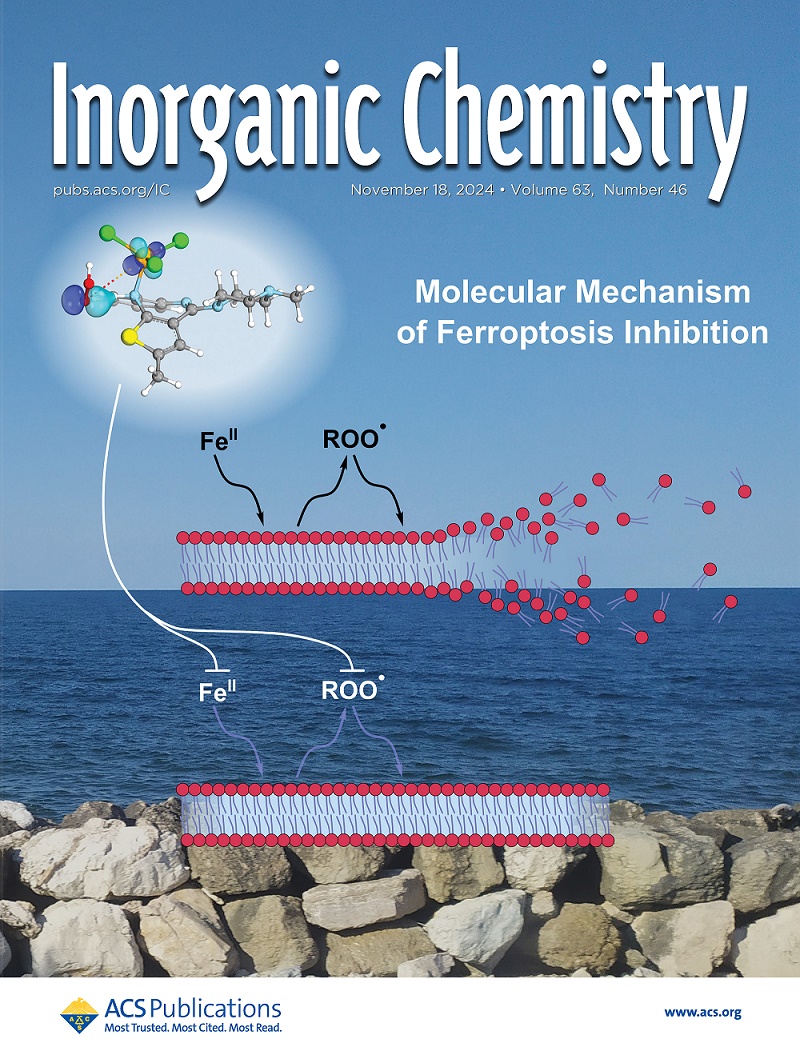Utilization of High-Silicon Iron Ore Tailings for 4N8 High-Purity Quartz Powder Production via Two-Stage Acid Leaching
IF 4.7
2区 化学
Q1 CHEMISTRY, INORGANIC & NUCLEAR
引用次数: 0
Abstract
This study investigates the process mechanisms for preparing 4N8 high-purity quartz powder from high-silicon iron ore tailings. Silicon concentrate obtained by wet high-intensity magnetic separation was used as the raw material, with impurities removed through a two-stage acid leaching process. The effects of acid concentration, temperature, time, and liquid–solid ratio on impurity removal were examined. Thermodynamic analysis shows that HF enhances the dissolution of Fe and Al impurities. In the first stage, response surface optimization determined the optimal conditions: acid concentration of 11.69 mol/L, temperature of 99.5 °C, and reaction time of 6.3 h, yielding SiO2 purity of 99.949%. Kinetic analysis indicates Fe leaching is controlled by a chemical reaction (activation energy: 66.69 kJ/mol), while Al leaching is limited by internal diffusion (activation energy: 13.64 kJ/mol). The second-stage leaching, conducted at 10 mol/L acid concentration, 250 °C, and a liquid–solid ratio of 5:1 for 9 h, further reduced impurities. The final 4N8 high-purity quartz powder was obtained through fine grinding and high-temperature treatment. These findings provide theoretical guidance for the high-value utilization of iron ore tailings in applications such as semiconductors and photovoltaics.

利用高硅铁矿尾矿两段酸浸生产4N8高纯石英粉
研究了利用高硅铁矿尾矿制备4N8高纯石英粉体的工艺机理。以湿法强磁选得到的硅精矿为原料,通过两段酸浸工艺去除杂质。考察了酸浓度、温度、时间和液固比对杂质去除率的影响。热力学分析表明,HF促进了Fe和Al杂质的溶解。第一阶段通过响应面优化确定了最佳工艺条件:酸浓度11.69 mol/L,反应温度99.5℃,反应时间6.3 h, SiO2纯度为99.949%。动力学分析表明,Fe浸出受化学反应控制(活化能为66.69 kJ/mol), Al浸出受内部扩散限制(活化能为13.64 kJ/mol)。第二阶段浸出,在10 mol/L酸浓度、250℃、液固比为5:1的条件下浸出9 h,杂质进一步减少。通过细磨和高温处理,得到最终的高纯度4N8石英粉体。这些发现为铁尾矿在半导体、光伏等领域的高价值利用提供了理论指导。
本文章由计算机程序翻译,如有差异,请以英文原文为准。
求助全文
约1分钟内获得全文
求助全文
来源期刊

Inorganic Chemistry
化学-无机化学与核化学
CiteScore
7.60
自引率
13.00%
发文量
1960
审稿时长
1.9 months
期刊介绍:
Inorganic Chemistry publishes fundamental studies in all phases of inorganic chemistry. Coverage includes experimental and theoretical reports on quantitative studies of structure and thermodynamics, kinetics, mechanisms of inorganic reactions, bioinorganic chemistry, and relevant aspects of organometallic chemistry, solid-state phenomena, and chemical bonding theory. Emphasis is placed on the synthesis, structure, thermodynamics, reactivity, spectroscopy, and bonding properties of significant new and known compounds.
 求助内容:
求助内容: 应助结果提醒方式:
应助结果提醒方式:


